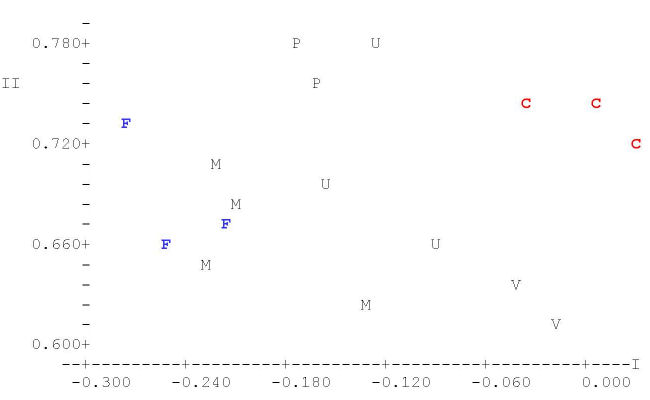

Variation in five
measures of skull shape among 17 species
in six families of terrestial carnivores. On Axis I, note the
distribution of the three canid
(dog) species (C) at the extreme
right,
and of the three felid (cat) species (F)
at
the extreme left. [Other codes: M
= Mustelidae (weasels), P =
Procyonidae
(raccoons), U = Ursidae
(bears), V = Viverridae
(mongooses and civets). The first
PCA component distinguishes short-faced animals with inflated crania
[Cats] from long-faced animals with compact crania [Dogs].